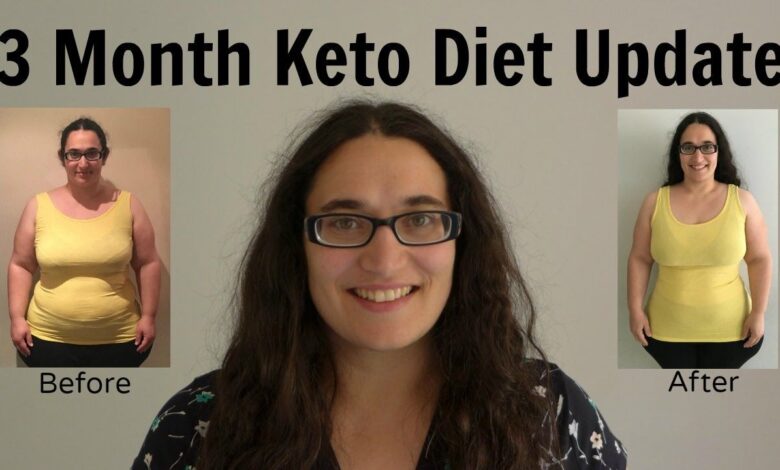
Welcome! If you’ve found yourself stuck, frustrated or stalled on your ketogenic path, you’re in the right place. Whether you’re in Ghana, across Africa, the United States or Europe, the ketogenic approach to weight loss holds real promise — but only if you know how to get back on track. In this deep-dive post, we’ll explore 10 powerful ways to revive your keto weight-loss story, address the common roadblocks, and inject fresh motivation and clarity. Grab a cup of tea, relax and let’s get moving.
Read Also Mastering Keto Weight Loss: Expert Tips to Boost Your Fat-Burning Journey
1. Understand the Plateaus: Why Your Keto Progress Slowed
You started full of excitement: cutting carbs, increasing healthy fats, feeling that initial surge of energy. But then… things stalled. You’re not alone. It happens, even to the most dedicated keto-practitioners.
When we talk about a “plateau,” what we usually mean is that your body has adapted to the new fuel system (fat + ketones) and your weight loss has slowed or stopped. One reason: metabolic adaptation. Your body becomes efficient at burning fat and reducing energy expenditure. You might still be eating the same as before, but burning fewer calories because your system has adjusted. Another reason: hidden carbs or too many processed keto foods creeping back in. Or maybe your protein is too high (keto works best when carbs are low, fats moderate, protein moderate). Yet another: you’re neglecting sleep or stress management, which impacts hormones like cortisol and insulin resistance.
To revive the journey, you need to recognize the plateau, analyze the root cause, and fix the leak — which leads us to step two.
**2. Audit Your Macros and Hidden Carbs
If your keto weight-loss effort has stalled, one of the first things to check is your macronutrient breakdown — how many carbs, fats and proteins you’re taking in — and the sneaky hidden carbs that might be sabotaging you.
You likely know the standard keto ratio: very low carbs (usually under 20-50 g/day depending on your size), moderate protein, high fat. But over time, conditions change — maybe you’ve gained lean muscle (so require more calories), maybe you haven’t adjusted your fats, maybe you’ve added occasional treats that bring in more carbs than you realize.
Hidden carbs are tricky. A “keto friendly” bar might still contain sugar alcohols that spike insulin. A salad dressing might have carbs disguised. Even sauces and condiments can add up. In Ghana or across Africa, local foods may have ingredients (e.g., millet, cassava flour, sweeteners) that bump up the carb count. In the US or Europe, those “low-carb breads” might still be higher than you think.
So here’s what you can do: track everything for two weeks using a reliable app. Be honest. Then, re-set your macros (maybe reduce carbs further for a short “reset phase”, or adjust fats if you’ve become plateaued). That audit will often show a problem you hadn’t noticed.
3. Prioritize Quality Fats and Whole Foods
On keto, it’s easy to fall into the trap of eating “keto processed foods” — think: sugar-free cookies, low-carb bars, “keto bread”, and so on. They may fit the macros, but they might not be helping your metabolic health or your weight loss.
Quality counts. For long-term sustainable keto, focus on whole foods: grass-fed meats (or locally raised animals), oily fish, eggs, avocados, nuts & seeds, olive oil, coconut oil, non-starchy vegetables. These supply micronutrients, good fats (omega-3, monounsaturated), and fiber (important for gut health).
Why does this matter? Because your body responds better when you feed it real, nutrient-dense food. Whole foods help stabilize your blood-sugar, improve satiety (you feel fuller, longer), support your mitochondrial function (which helps fat-burning), and keep your hormones balanced. If you’ve been relying on “keto substitutes”, your system may be missing key nutrients — which can stall progress.
In the US, Europe or Africa, the same principle applies: go local. Takoradi or Accra, find fresh produce, local fish, eggs. In the US/Europe, choose quality over convenience. This shift alone can kick-start your journey.
4. Reset with a Short Clean-Keto Boost
Sometimes the best way to revive your journey is to deliberately reset. Think of it as a “kick-start week” or “mini-reset” that gets things moving again.
What does a clean-keto reset look like? For 7-10 days:
- Keep carbs very low (20 g or below) and avoid “keto treats” or processed substitutes.
- Ensure fats are from clean sources (fish, olive oil, coconut oil, avocado) rather than heavily processed “low-carb snacks”.
- Drink plenty of water (2-3 litres/day) and make sure electrolytes (sodium, potassium, magnesium) are adequate — many times plateaus are worsened by dehydration or electrolyte imbalances.
- Sleep at least 7-9 hours nightly and minimize late-night snacking.
- Avoid alcohol and high-insulin foods (e.g., sweetened coffees, sugar-free syrups) during that week.
This reset flushes out the metabolic “sludge” that might be holding you back, refreshes your mindset, and often re-ignites fat-burning. Think of it like resetting your keto “engine” so you can drive again in high gear.
5. Get Active — But Smart: Movement That Fuels Fat-Burning
Exercise matters — not just for weight loss, but for metabolic health, insulin sensitivity and muscle preservation (which in turn helps maintain your basal metabolic rate). But smart movement matters more than brute force.
If you’ve plateaued, avoid the “I’ll just do more cardio” trap. Too much high-intensity cardio can elevate cortisol, hinder recovery, and throw your hormones out of whack. Instead, consider a blend:
- Strength training 2-3 times per week: building lean muscle helps boost your resting metabolic rate and improves how your body handles glucose and fats.
- Low-intensity steady-state (LISS) for 20-30 minutes: walking, cycling, light swimming. These activities enhance fat-oxidation without taxing your system.
- A short burst (HIIT) once per week: but only if you’re recovering well and not feeling overly fatigued.
In Africa, the US or Europe, the principle is the same: find a movement you enjoy (so you’ll stick with it), balance intensity, and avoid doing so much that you reach exhaustion or sabotage your rest and recovery. Movement ignites but rest sustains.
6. Manage Stress and Prioritize Sleep
This one often gets overlooked — and it’s a silent saboteur. Stress and poor sleep can derail your keto progress in ways you didn’t expect.
Why? Because when you’re chronically stressed or sleep-deprived:
- The hormone cortisol rises — high cortisol means higher insulin resistance, which means your body doesn’t burn fat as easily.
- Hunger hormones shift — you may crave carbs, sugars, or quick energy foods (which may throw you off keto).
- Recovery from exercise suffers, so you can’t build muscle, repair, or adapt optimally.
- Your fat-burning metabolism slows down.
So if you’ve plateaued, ask: Am I sleeping enough? Are late-night screens, work stress, or family chaos messing up my rest? Do I take at least one “wind-down” ritual (meditation, reading, stretching) before bed?
Getting 7–9 hours of good quality sleep and managing daily stress (even just 10 minutes of breathing exercises or a short walk) can bring dramatic improvements. Treat sleep and stress management as core keto tools — not optional extras.
7. Consider Intermittent Fasting or Time-Restricted Eating
When the standard keto approach has been working but now seems to stall, adding an extra layer of strategy like intermittent fasting (IF) can help. Many people combine keto with time-restricted eating (TRE) — e.g., eating only within an 8- or 10-hour window — to boost fat-burning, improve insulin sensitivity, and simplify their eating pattern.
Why does IF help on keto? Because once your body is fat-adapted, extending the fasting period forces your system to tap into stored fat more consistently. Also, fewer eating windows mean fewer opportunities for hidden carbs or overeating.
Here’s a simple protocol to try (after your reset week and if you feel healthy): Pick a meal window — e.g., 12 pm to 8 pm (16:8 method). Have two meals within that window, both keto-friendly. Outside that window, water, black coffee or tea (no sugar), minimal calories. Monitor how you feel — some may thrive, others might find hunger or fatigue creeping in (so adjust).
If you’re in Africa, the US or Europe, this protocol works similarly, but listen to your body. If you’re very active, adjust accordingly. The aim: boost metabolic flexibility and push your body back into fat-burning gear. It’s a powerful revival tool.
8. Track Progress Smartly — Not Just by Scale
When you’re on a journey, it’s tempting to focus solely on the number on the scale. But that’s misleading. Your body is dynamic: you may be losing fat, gaining lean muscle, changing gut-health, stabilizing hormones — all of which may show up slowly on the scale but profoundly in your energy levels, body measurements or mood.
So revive your journey by tracking intelligently:
- Take body measurements (waist, hip, chest, arms, thighs) every 2-4 weeks.
- Take progress photos every month (front, side, back) — you’ll see changes that the scale can’t show.
- Monitor how your clothes fit and your daily energy, hunger levels, mood, sleep quality.
- Track biomarkers if you can: for example, blood ketones, fasting insulin, HbA1c, or even just your resting heart rate and blood pressure (especially if you’re in the US/Europe with easier access to labs).
- Use a journal: what you eat, how you slept, how you felt. Patterns emerge.
By tracking more than just weight, you’ll notice the positive shifts even when the scale seems stuck — and that helps keep motivation alive.
9. Re-evaluate Your Goals and Mindset
Let’s talk mindset — because often the progress we want gets blocked more by beliefs and psychology than by diet alone. If your keto journey has stalled, it might be time to recalibrate your mindset and goals.
Ask yourself:
- Why am I doing keto in the first place? Is it for health, weight loss, performance, metabolic flexibility, or just because “everyone is doing it”?
- Are my goals realistic? If you’re expecting dramatic losses week after week, you might feel discouraged when progress slows.
- Am I being kind and patient with myself? Plateaus are normal. This isn’t a sprint, it’s a lifestyle.
- Do I see progress beyond the scale? Maybe you have more energy, better sleep, fewer cravings, better blood markers.
- Do I celebrate small wins? Sometimes the win is “I didn’t crave snacks today” or “I slept deeply”.
Reviving your journey means renewing your “why”, aligning your mindset with the reality of metabolic change, and seeing every step (even small ones) as progress. Think of it as shifting gears rather than slamming on the brakes.
10. Leverage Community, Support and Accountability
We’re social creatures. Even when doing something individually like keto, having support, accountability and community can be a game-changer. If you’ve stalled, you’re not alone — but maybe you feel alone.
Here are ways to leverage community:
- Join online keto groups (Facebook, Reddit, forums) where people share wins, challenges, tips. Hearing someone else’s “I stalled for two months then this one change helped” story can keep you motivated.
- Find a keto buddy — someone who will check in, share recipes, keep you honest.
- If possible, a coach or nutritionist familiar with keto can help audit your plan, suggest tweaks and give you a fresh perspective.
- Use apps that track macros and let you connect with others (community challenges work).
- Local meetups: In Ghana or other African cities, you might find health groups or keto meetups. Sharing meals, recipes, local produce tips helps you adapt keto to your region rather than trying to copy US/Europe-centric meals.
When you feel supported, you’re more likely to stay on track, bounce back from off days, and rev up momentum.
Additional Bonus Tips: Keto Across Regions (Africa, US, Europe)
Since you may be in Africa (like Ghana), the US or Europe, here are region-specific tweaks:
- Africa: Use locally available produce (e.g., fish, eggs, avocado, leafy greens, coconut). Substitute high-carb staples (yam, cassava, plantain) occasionally, not daily. Make your own keto sauces/spices to avoid hidden sugar.
- US/Europe: Watch for convenience “keto” products with hidden ingredients. Import your produce seasonally. Get familiar with local sourcing of wild fish, grass-fed meats, organic fats.
- Global tip: Travel can disrupt keto (time zones, different foods, dining out). Plan ahead: pack seeds/nuts, research keto-friendly options, pick grilled protein + veggies, avoid sugary drinks.
- Cultural meals: Adapt regional cuisine. In Ghana: grilled tilapia + avocado + spinach or kontomire. In US/Europe: salmon + broccoli + cauliflower mash. The idea is: use the framework of keto, but incorporate local flavors so your journey feels sustainable, not foreign.
Conclusion
Reviving your keto weight-loss journey is entirely possible — even if you’ve hit a plateau, lost motivation or feel like you’re spinning wheels. By auditing your macros and hidden carbs, prioritizing quality whole foods, doing a reset, getting active smartly, managing stress and sleep, incorporating fasting if it suits you, tracking progress smartly, renewing your mindset and leveraging community support — you’ll get the momentum back. Remember: this journey isn’t just about losing pounds; it’s about reclaiming health, energy, metabolic freedom and confidence. So take a deep breath, pick one or two of these strategies today, and move forward. The results will follow.
Read Also How to Revitalize Your Keto Journey with Science: Smart Strategies for Success
FAQs
1. What should I do if I feel tired or low energy while trying to revive my keto journey?
If you’re feeling fatigued, low energy or drained, first check your electrolytes (sodium, potassium, magnesium) — many keto-plateau issues link to imbalance. Also, make sure you’re eating enough calories for your size, activity level and that you’re getting enough fat (keto is high-fat for a reason). Sleep and stress may also be affecting energy. If you’ve added intermittent fasting, you may need to ease into it. Finally, give yourself a few days: sometimes fatigue happens during the “reset” phase but improves as your body adapts.
2. Can I revive my keto weight loss without exercise?
Yes — you can make significant progress without heavy exercise, especially if your diet, sleep, stress and macros are on point. But exercise amplifies results: it helps maintain muscle, boost metabolism, improve insulin sensitivity and overall health. If you can’t do strength training yet, even daily walks, light activity and stretching will help. The key is consistency, not extreme workouts.
3. How often should I do a “reset” week or time-restricted eating?
There’s no one-size-fits-all. A reset week is useful when you’ve plateaued, feel stuck or drifted off track. That might happen every 3-6 months depending on your body and consistency. For time-restricted eating (TRE) or intermittent fasting (IF), many people adopt a flexible approach: they use it on weekdays and relax on weekends, or they use it for a few months then revert to normal eating windows for variety. The key is listening to your body and making sure you’re not overdoing it.
4. What if I live in a region where keto-friendly foods are expensive or hard to find (e.g., certain parts of Africa or rural areas)?
That’s a valid challenge, but you can still adapt and succeed. Use local affordable foods: eggs, local fish, chicken, avocados (if available), nuts/seeds, greens, coconut oil, olive oil (where possible). Focus on whole foods, minimal processing and local produce. Plan your meals ahead, buy in bulk when possible, and substitute wisely (e.g., cauliflower instead of rice, cucumber instead of chips). Remember: the concept of keto is low carbs, moderate protein, high good fats — you don’t need imported “keto” snacks to succeed.
5. How will I know that my keto journey is reviving and that I’m making progress?
You’ll see signs beyond just the scale: such as looser clothes, better energy, improved sleep, fewer cravings, improved mood, better digestion, higher stamina during workouts, changes in body shape (even if scale stays same), better lab markers (if you check them). New motivation, fewer stalled days, smoother ketone levels (if you measure) — all these are signs. Celebrate those “mini-wins” because they show you’re moving in the right direction.
Here’s to your renewed keto journey — may this approach help you break through the stall, reclaim momentum and thrive!




